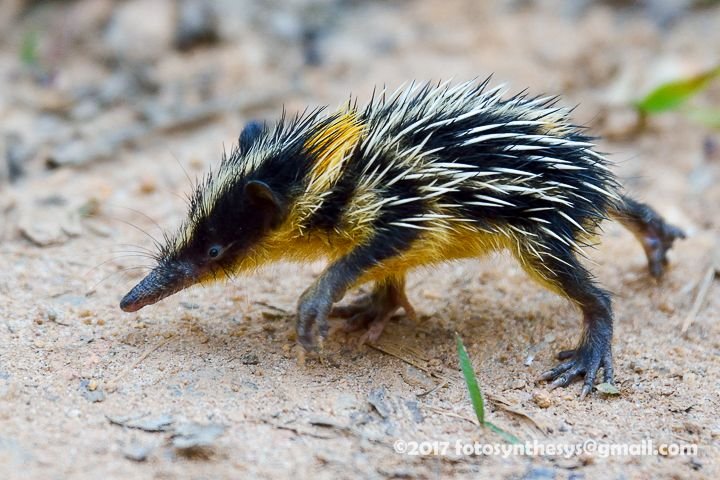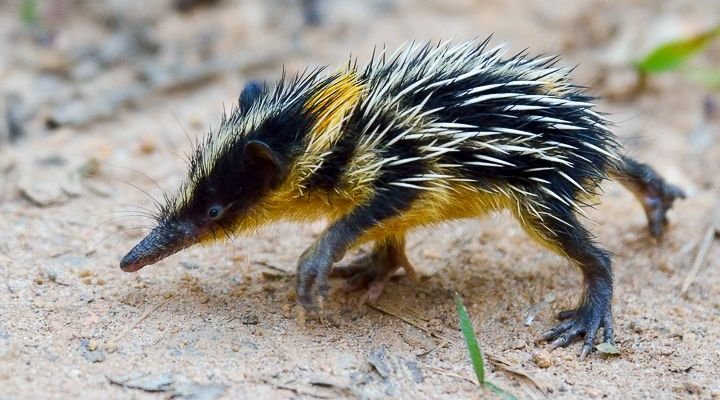
So what should you do if you encounter a tenrec in the wild? Don’t worry—this guide will walk you through all the steps you need. Think of it like a roadmap for smoothly navigating this unexpected wildlife encounter. From understanding their behavior to knowing how to interact (or not) with these fascinating creatures, I’ll help you feel prepared and confident in your next nature adventure.
Understanding the Tenrec’s Habitat
First things first, it helps to know where you might encounter a tenrec. These little guys are mostly found in Madagascar, where they thrive in various habitats—from tropical rainforests to dry spiny forests. The fact that they’re not common in many other parts of the world makes them all the more special!
In Madagascar, you can find them hiding under leaves, burrowing in the ground, or even climbing trees. These habitats provide the perfect cover from predators. If you’re lucky enough to spot one while hiking or exploring, remember that you’re witnessing a creature that has adapted over millennia to survive in a unique environment.
Understanding their habitat also gives you insight into when and where to look for them. They are mostly nocturnal, meaning they’re active at night. So, if you’re out during the day in Madagascar, the chances of spotting a tenrec might be slim. Early evenings or early mornings are your best bets.
Identifying a Tenrec
Now that you know where they live, let’s talk about how to identify a tenrec if you see one. One of the most striking features is their quills. They might look spiky like a hedgehog, but tenrecs have short, dense fur that can vary in color from brown to yellowish. Some species even have specific markings that could make them stand out.
There are different species of tenrecs, each with unique characteristics. For example, the common tenrec is relatively small and has a rounded body, while the bush tenrec is a bit larger and more elongated. If you see a tenrec, look for its small, pointed snout and tiny ears—these features will help you distinguish it from other animals.
Knowing what a tenrec looks like is important because it can also help you avoid confusion with other wildlife. Imagine mistaking a shy tenrec for something more dangerous, like a porcupine! Keeping your eyes peeled for those distinct traits will make your encounter more rewarding.
What To Do If You Encounter One
So, you’ve spotted a tenrec! Now what? The first rule is to stay calm. Tenrecs are generally shy and will likely want to avoid you as much as you want to avoid startling them. If you spot one, take a moment to observe from a distance. It’s like being a sneak-peek viewer into the life of a woodland creature.
Here’s the thing: you don’t want to approach too closely. Tenrecs can feel threatened, and while they’re not aggressive, they might roll into a ball or try to scurry away. By staying back, you’re giving them space, which leads to a peaceful encounter.
Also, consider pulling out your phone for a photo—but remember to keep your distance! Snapping a pic can help you remember the moment and share the experience with friends. Just don’t use a flash; it can disturb these little creatures and ruin your chance of observing their natural behavior.
Respecting Their Space
Respect is key when encountering wildlife, including tenrecs. Think of them like the introverted friends you have—sometimes they need their space! Approaching too closely can stress the animal and disrupt its natural behavior.
If you’ve managed to see a tenrec without scaring it off, you might be tempted to feed it or touch it. But, here’s the thing: feeding wild animals can lead to dependency on humans, disrupt their natural foraging behavior, and even result in health problems.
Also, touching a tenrec can be risky for both you and the animal. They can carry parasites that might transfer to humans, and they might not appreciate a surprise petting. Just let them be—watch them enjoy their meal of insects or fruits from a respectful distance.
Potential Safety Considerations
While tenrecs are generally harmless, it’s always smart to be aware of your surroundings. If you’re deep in a forest or wilderness area and see one, make sure you’re not near other potentially dangerous wildlife.
Tenrecs can curl into a ball and present their spines when threatened. This behavior is a defense mechanism rather than aggression, but it’s best to maintain your distance. If you’re hiking alone or in an area where you’re unsure of safety, it’s a good idea to have a buddy with you.
Always keep an eye out for the environment around you too. Look for signs of other wildlife that may be more aggressive. By staying aware, you’ll enjoy your encounter with a tenrec in a safe manner.
Documenting Your Encounter
Nothing beats telling your friends about your encounter with a tenrec! But instead of simply recounting the tale, consider documenting it. Take a few notes about where you saw it, what it was doing, and how you felt.
You could also create a mini wildlife journal. Jot down details like the date and time, the weather, and your thoughts on the experience. This not only helps you remember the moment but also raises awareness about these lesser-known creatures and their habitats.
If you’re into photography, share your photos on social media or wildlife forums. Your experience might inspire others to appreciate wildlife and the importance of respecting their habitats. Plus, who doesn’t love sharing a cool animal sighting?
Concluding Thoughts on Tenrec Encounters
Encountering a tenrec in the wild isn’t just a chance meeting—it’s a glimpse into the fascinating world of Madagascar’s wildlife. Remember to stay calm, respect their space, and appreciate the magic of the moment. By following these simple guidelines, you’ll not only enjoy a meaningful encounter but also contribute to the well-being of these quirky animals.
The next time you’re out exploring, keep an eye peeled for this remarkable creature. Who knows, you might just have a memorable experience that you’ll cherish forever. And really, isn’t that what nature is all about?

